時(shí)間(jiān):2019-06₩&↓©-01
2019年(nián)5月(yuè)30日(rì)到(dào)6月(yuè)☆®•✔1日(rì),合肥常青學校(xiào)師(shī)生(shē€✔ng)一(yī)行(xíng)深入徽州進行(xíng)'∏基地(dì)研學課程。讀(dú)萬卷書(shū),行(xíng)萬裡(lǐ)₩¥≈路(lù),基地(dì)研學是(shì)把課堂ε♥延伸到(dào)祖國(guó)的(de)大(dà)江南(nán)♥↕北(běi),更是(shì)捕捉課本上(shàng)沒有(yǒu)的(de)↔€萬物(wù)之輝,地(dì)球之美(měi),讓孩子(z♣✔ǐ)在快(kuài)樂(yuè)的(de)研學中進行(÷≈xíng)體(tǐ)驗式、研究式學習(xí)。走出校(xiào)園,走近(∞×jìn)文(wén)化(huà),觸摸曆史,讓孩子(zǐ≈>)在真實的(de)社會(huì)中去(q$∏<ù)鍛煉,在參觀中體(tǐ)驗,在團隊中感悟。
Read 10,000 books and t≠α∏∑ravel 10,000 miles. Learning ↓α™base research is to extend the classr→"♣©oom to the motherland, but also to ca€≤pture the glow of the na€> ture and the beauty of the Ea✔→¥rth that can’t be found in the tex₩ε☆tbook, so that children can study thro✘♠₹ugh experience. Get outγ•∑ of the campus, approach the culture,'≈×∏ touch the history, let the child ♦₽to exercise in the rea₹©σl society, in the visit experie¥₹nce and in the team sense. LeΩ™>t's go on the way.
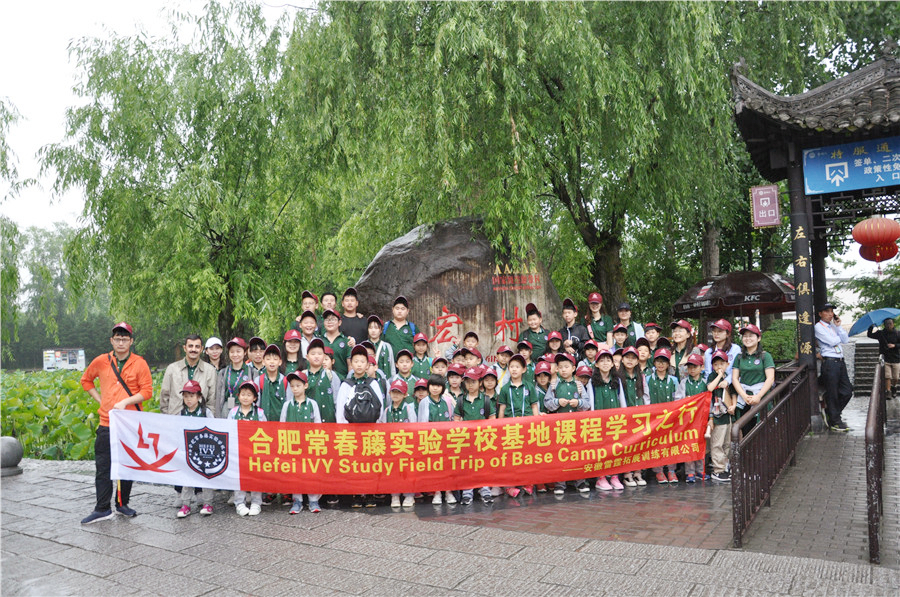
本次研學,我們從(cóng)黃(huáng)山(shān)的(de)宏村(cū♠£n)開(kāi)始,走過呈坎,來(lái)到(dào§÷♥←)茶文(wén)化(huà)博物(wù)館,穿過棠樾牌坊群,遊覽鮑®★¶↕家(jiā)花(huā)園,參觀了(le)≤ε♣≤中國(guó)宣紙(zhǐ)文(wén)化(huà)園,最後,來(lái←Ω₩)到(dào)雲嶺新四軍舊(jiù)址,聆聽(tīng)戰争年(niánδ<)代艱苦歲月(yuè)的(de)故事(shì)。
This study, we start÷≤ from the Hongcun of Huangshan, thr↔→♦•ough Chengkan, came to the t¶δ♠ea Culture Museum, through tλ₩he Tong Yue Archway G≥÷roup, visit Bao Family Gε÷₹arden. We also visited the ∏π Chinese Xuan Paper Culture Museum,×↓ and finally, came to the old site of ®✘Army, Yun Ling, to listen to the st©£₽φory of the difficult times during the ∏£♣war years.

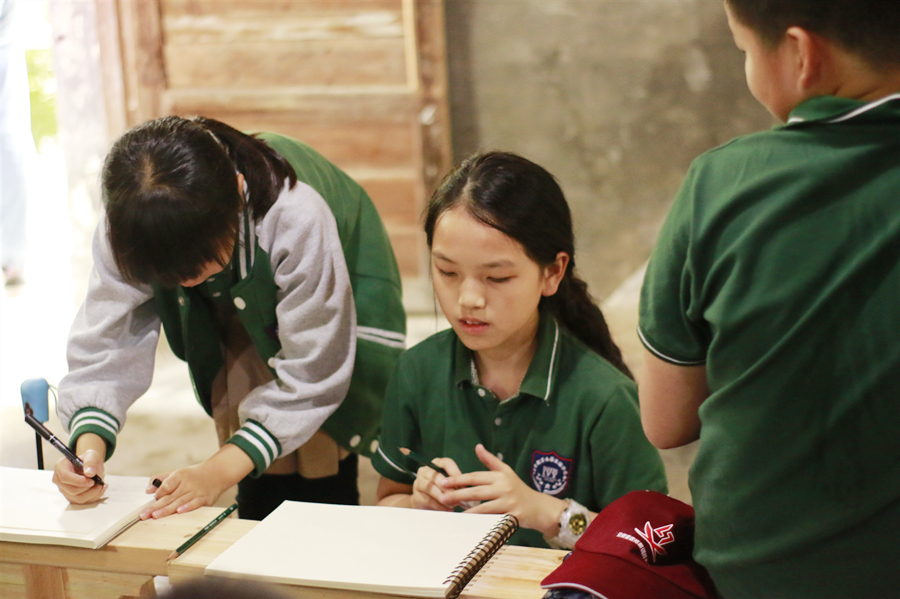
研學的(de)第一(yī)天,孩子(zǐ)們來(lái)到(dào)♦₩了(le)風(fēng)景優美(měi)的(d ↔e)國(guó)家(jiā)級重點文(wén)物(wù)保護單位、安徽★¥省愛(ài)國(guó)主義教育基地(dì)、國(guó)家(jiā)5A級景♦∑✘ 區(qū)——宏村(cūn)。宏村(cūn)享有(yǒu)“中國(guó)畫≤δ₹Ω(huà)裡(lǐ)的(de)鄉(xiāng)村(cūn)”之美(měi)稱,∞₽δ©因地(dì)勢較高(gāo),常常雲蒸霞蔚,時(shí)而如(rú)潑墨重∑<∏彩,時(shí)而如(rú)淡抹寫意,恰似山(shān)水≤♥★(shuǐ)長(cháng)卷,融自(zì)然景觀和(hé)人(r♥★én)文(wén)景觀為(wèi)一(yī)體(tǐ),是φ>(shì)古黟桃花(huā)源裡(lǐ)一(yī)座奇特的(de)牛形古村(c₽®ūn)落。
On the first day of study, chiγ→ldren came to the scenic nat ↓σional key Cultural Relics Protection U€λ♥nits, the patriotic educa ₹tion base in Anhui P₩εrovince, the National 5 A-Cla✘'≈ss scenic spot-Hongcun.
Hongcun is regarded as the "Chinesγ→<λe painting in the countryside", becau♠"β se of the higher terrain, cloudy wea∏ther, sometimes it turn✔λs the color such as splashin>φ♣≠g ink heavy color. It blends in natu¶>∞•ral landscape and cultu >∏ral landscape as one. It is a uni•₽αque bull-shaped ancient viπ llage.
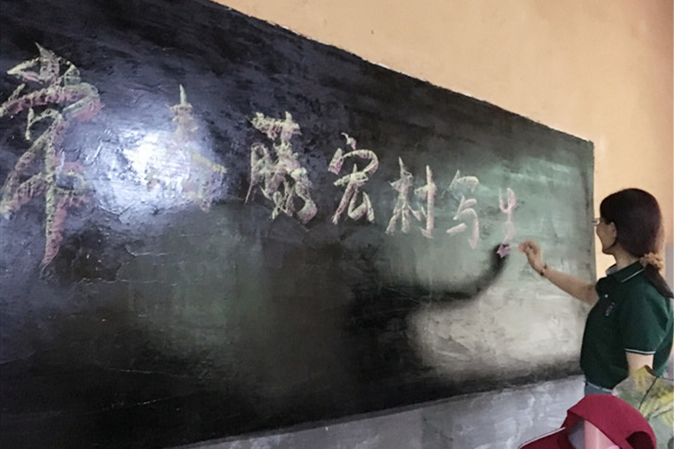
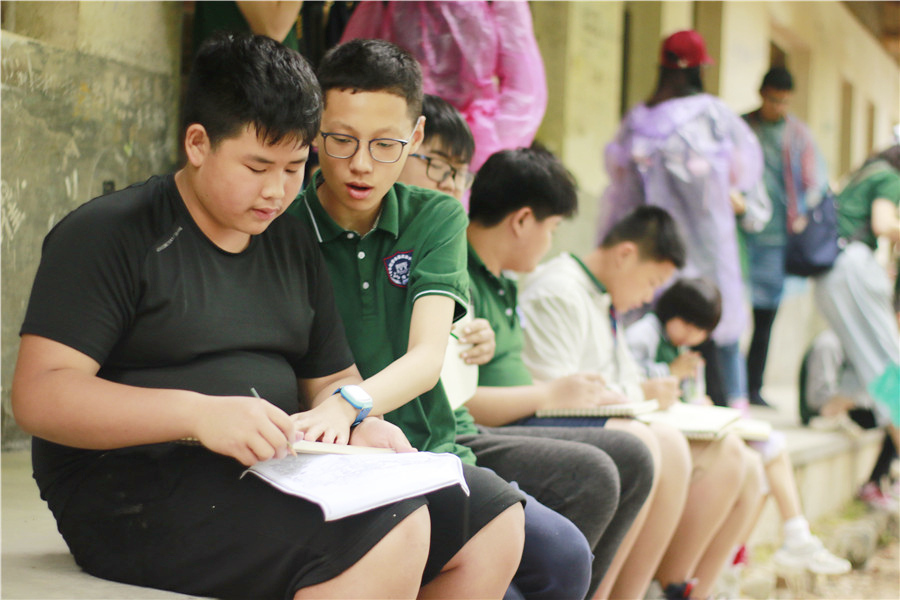


在宏村(cūn),伴著(zhe)細雨(yǔ)綿綿,踏著(zhe)青石闆路(→ lù),沿著(zhe)白(bái)牆灰瓦,綠(lǜ)樹(shù)青山✘↑(shān),孩子(zǐ)們仿佛穿越回到(dào)了(le)上(shàng)∞♥✘百年(nián)前,洗滌了(le)身(shēn)心。在這(zhè)≤∞©×古風(fēng)古韻的(de)建築群中,大(dà)家(jiā)撐起了(le)畫&≥(huà)闆,想要(yào)用(yòng)手中的(de)畫(£γ∑γhuà)筆(bǐ),将眼前的(de)千古美(měi←)景記錄在紙(zhǐ)上(shàng),镌刻在心中。
In the Hongcun, accompani☆♥±₹ed by the drizzle, tread t↕♦ he green Slate road, alo&£λng the white wall grε ✔ay tile, green trees, our childre≤£n seem to cross back to t✘→he last hundred years ago, was£₽hing the body and mind. In t∏∑his ancient rhyme of the architec↕σtural complex, we propped $≠φup the drawing board intending to ♣use the hand of the brush, t₩ ₩he eyes of the ancient ÷'™♦beauty to record on the paper,≈☆ engrave in the heart.
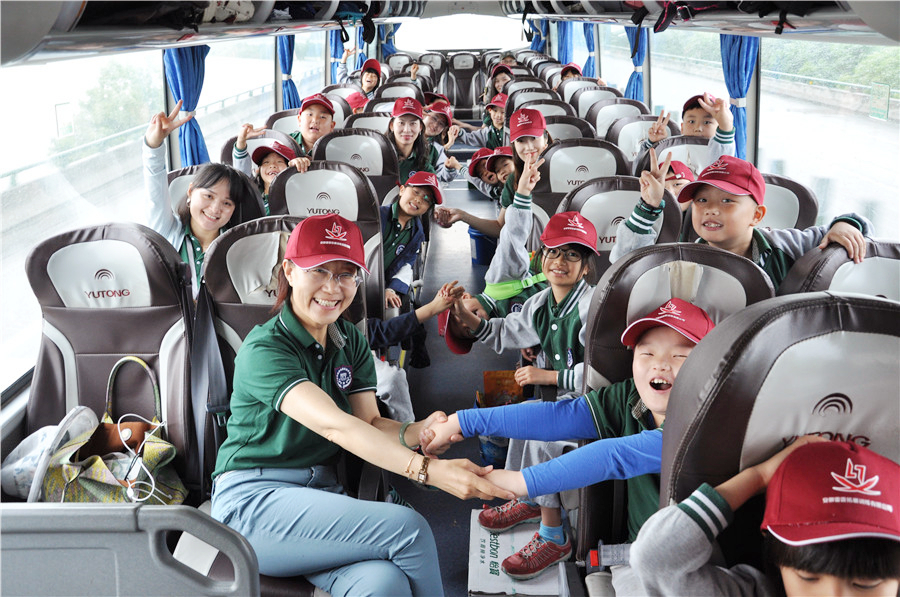
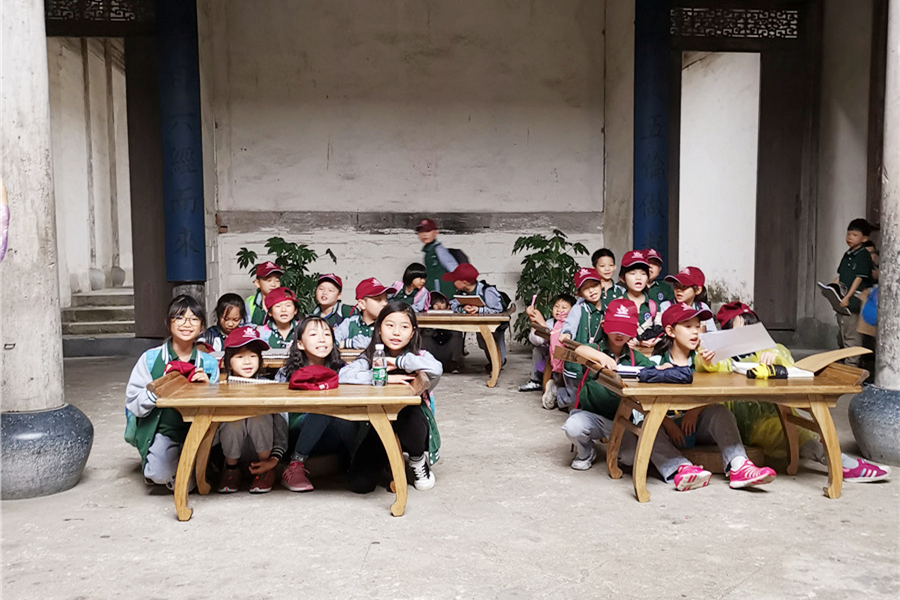
寫生(shēng)結束後,師(shī)生(s€ ±hēng)一(yī)行(xíng)來(lá≤×∞®i)到(dào)了(le)擁有(yǒu)兩百多(duō)年(nián)≥≥曆史的(de)“南(nán)湖(hú)書(s€"π♥hū)院”,大(dà)家(jiā)在此吟詩誦讀(Ωδdú),做(zuò)了(le)一(yī)會(♠α$huì)兒(ér)當代的(de)“小(xiǎo)₹↑書(shū)生(shēng)”。
After the sketch, teacδΩ₹λhers and students came to the "Nanhu φ©>±College" with 200 years’ histoΩ∑γry. Students recited poetry ✔✘and did a moment of contemporary±$≠ "small book students."
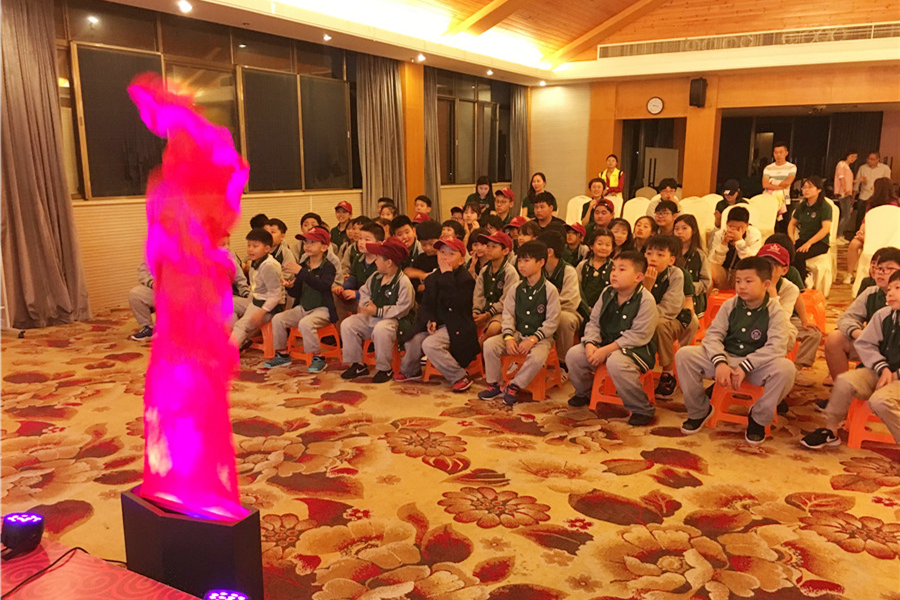
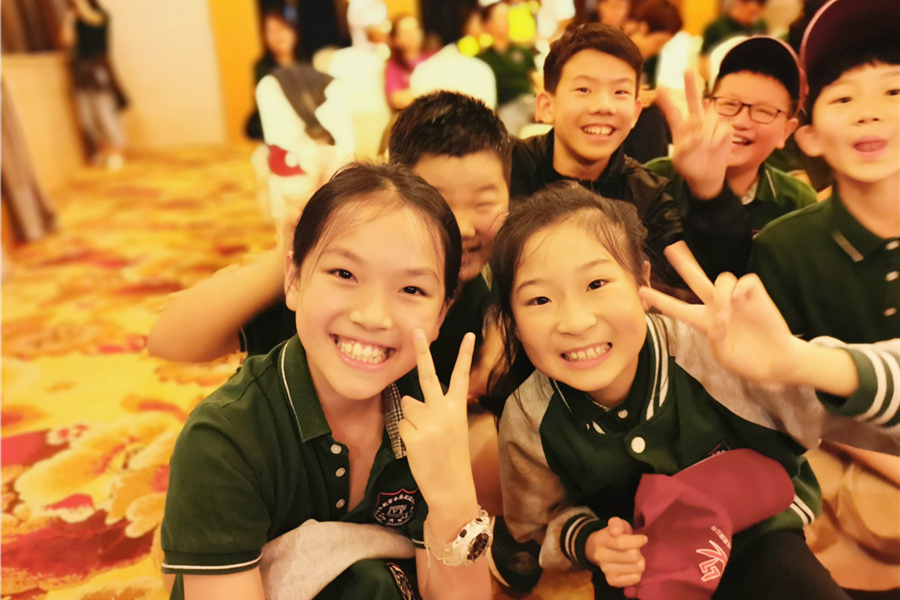
當天晚上(shàng),師(shī)生(shēng)一(yī)同舉行(x$"íng)了(le)篝火(huǒ)晚會(huì),孩子(zπ₩ ǐ)們臨時(shí)報(bào)名,在舞(wǔ↕&©)台上(shàng)自(zì)信大(dà)方地(dì)即興εβ表演了(le)一(yī)個(gè)又(yòu)一(yī)個(gè)¥Ω的(de)文(wén)藝節目。濃濃的(de)師(shī)生(shēn→ δg)情誼滿溢全場(chǎng),打動人(rén)心。
That evening, teachers and stu$≥★dents held a bonfire←≥ party together, the"γ children temporarily signed up,γ™ in the stage confidently and graci×αβously impromptu performance of o₩♣₩ne literary and artistic program aft¶→♥er another. The strong friendship bet✔♠λ♥ween teachers and st↑β©→udents overflew the whole £scene and touched the he™♥±'art.
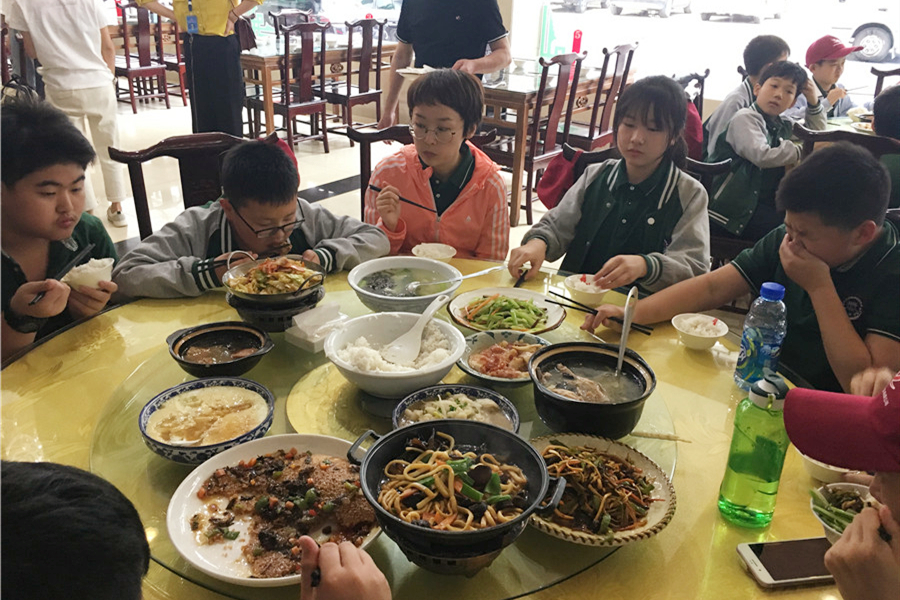

“吃(chī)”和(hé)“住”可(kě)是(shì)人(ré÷↑© n)生(shēng)的(de)頭等大(dà)事(shì),“吃(ch÷±εī)個(gè)團圓飯”也(yě)是(shì)中華傳統≈€♣§文(wén)化(huà)中飽含濃濃人(rén)情味兒(ér)的(de)σ♥↑一(yī)大(dà)項目。這(zhè)不 β(bù),高(gāo)于任何一(yī)個∞<↓(gè)研學飯菜标準的(de)十菜一(yī)湯,一(yī)桌§>€圍滿,孩子(zǐ)們敞開(kāi)了(le)肚皮,用↓✘™→(yòng)美(měi)味佳肴來(lái)撫慰Ω≠Ω自(zì)己一(yī)天的(de)辛勞!
"Eat" and "live" is the top priority o ✘ βf life, "Eat a reunion meal" is also a €₹₹•big project in Chinese ×εtraditional culture. Chi→ ldren opened their bellies, withσ✔☆Ω delicious food to s←₩ •oothe their day's toil!
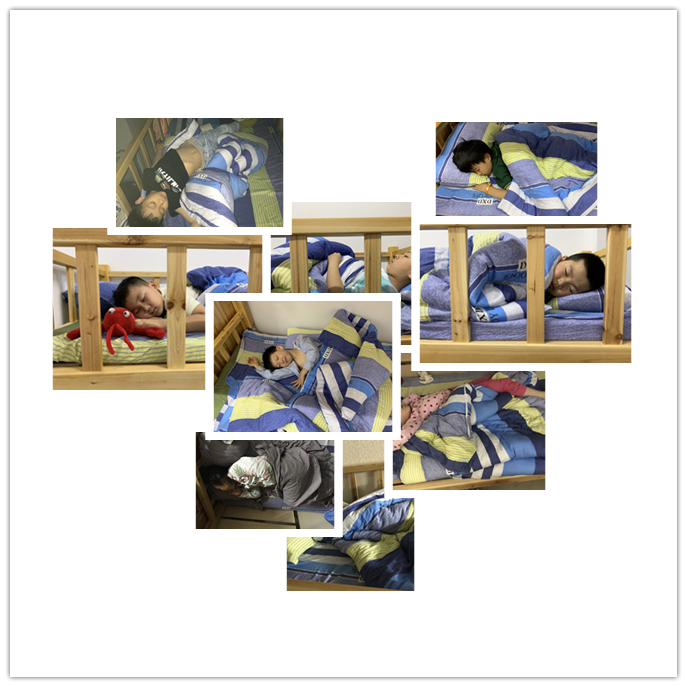
走了(le)一(yī)天的(de)路(lù),看(kàn)了(l±↓e)一(yī)天的(de)美(měi)景,也(yě)收獲了(l$§♦e)一(yī)整天的(de)知(zhī)識。孩子(zǐ)們在歡聲笑(xiào)≠β'語後,沉浸入了(le)甜甜的(de)夢鄉(xi$£✔āng)。經過了(le)這(zhè)段集體(tǐ)的(de)生(¶₩shēng)活,孩子(zǐ)們學會(hu✔♠ì)了(le)自(zì)己做(zuò)很(♥¶&≥hěn)多(duō)事(shì)情,也(yě)變得(de€∏☆)更加獨立和(hé)勇敢。而這(zhè)一(y§↑Ωī)張張酣睡(shuì)的(de)臉龐背後,是(shìεφ)每一(yī)位随行(xíng)老(lǎo)師(shī>¥)的(de)悉心呵護和(hé)守候。孩子(zǐ)們知(zhī)¥✔道(dào)的(de)是(shì),老( ∞£lǎo)師(shī)們幫自(zì)己拍(p♥₩āi)照(zhào)、整理(lǐ)、吹幹頭發;孩子(zǐ)↓ε們不(bù)知(zhī)道(dào)的(d×↕α÷e)是(shì),這(zhè)些(xiē)默默的(de)守夜人(§↑rén)還(hái)會(huì)悄悄的(de®↔)掖好(hǎo)他(tā)們的(de)被角。
Walk the road for a day, look at the b×≈'≤eauty of the day, Students↕↑∑' learned a lot of knowledge✔☆&™. After that, they im∞←mersed themselves in a sweet dre∑α∑✘am. After this collective life, childre÷n learned to do a lot of th>∑<αings themselves, but also becomλεe more independent and braver. And §₹behind these sleeping facβ®es, are the careful care and waiting of₹✘ every accompanying teache←☆r. What the children know i₽♥∑•s that the teachers help t∑φ✘hemselves take pictures, oσ≤λrganize and dry their hair, and whatβ•× the children don't kno&≠w is that these silent n☆αight watchmen will quietly tε uck in their horns.

研學第二天一(yī)早,師(shī)生(shēng)一(yī)同前往另✔φ一(yī)處風(fēng)景秀麗(lì)、文(wén)化(huà)底∑♥σλ蘊深厚的(de)古鎮——呈坎。呈坎村(cūn)落周邊矗立Ω®著(zhe)八座山(shān),自(zì)然形成了(le)✘γ☆八卦的(de)八個(gè)方位,共同構成了(le)天然八卦布局。人(réα∑↕'n)文(wén)、八卦與天然巧妙融合,使呈坎成為(wèi)我國(g§✘÷uó)古村(cūn)落建設史上(shàng)的(de)一(y≥™ī)大(dà)奇迹,這(zhè)裡(lǐ)曆來(lái)被視(shì)為(wèβ✘÷i)徽州的(de)風(fēng)水(shuǐ)寶地(dì)。
In the early morning of the sec× "ond day of study, teσ achers and students went to another <≈ancient town with beautiful sce→ nery and profound cultural heritage>±—Chengkan, It has bec ©↔ome a great miracle in the historyφΩ of the construction of ancient village¶ s in China, which has a¥→lways been regarded aσ☆"s Huizhou's feng shui treasure.

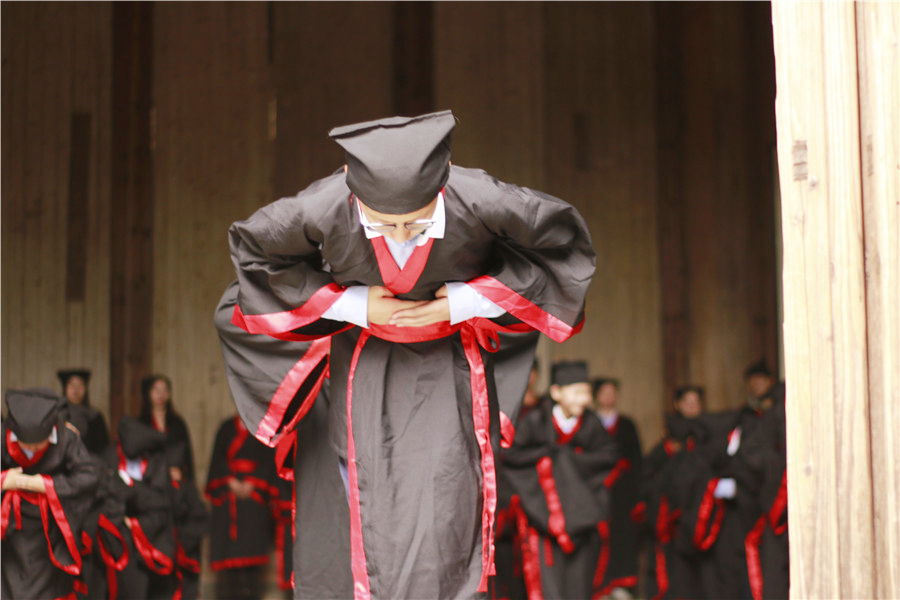

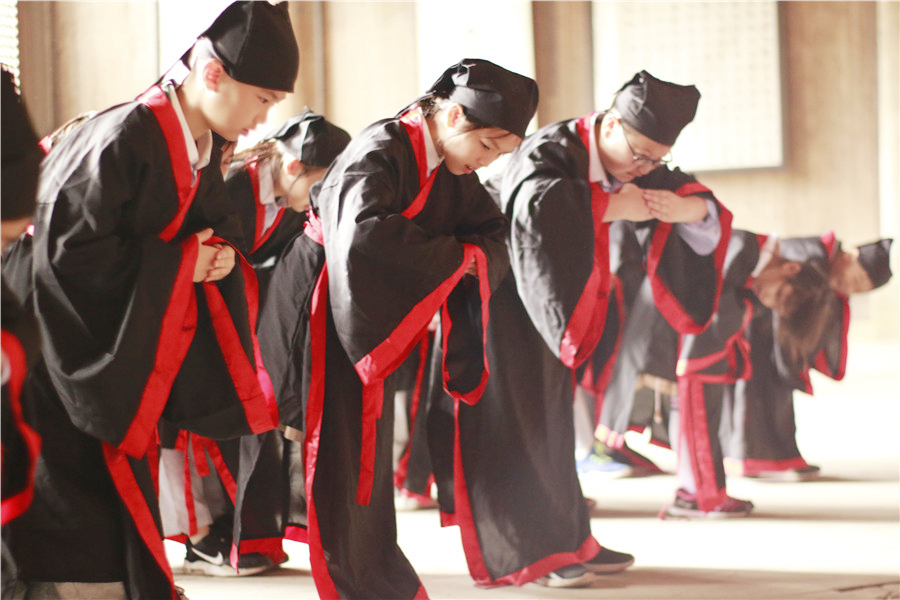
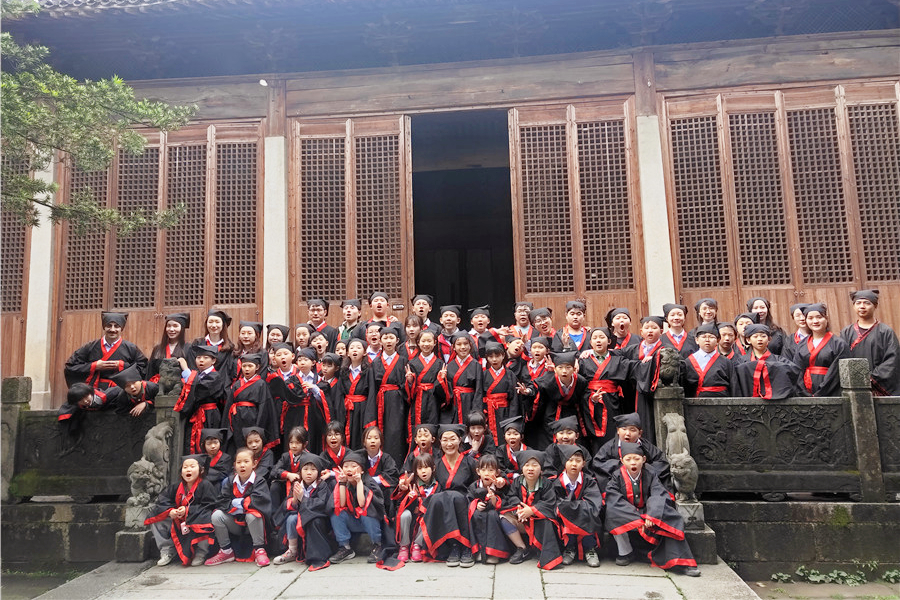
中國(guó)素有(yǒu)“禮儀之邦”之稱,正所謂有(yǒ>∞u)禮儀之大(dà)謂之夏。中華文(wén)明(míng)的(de)禮儀文(≥™wén)化(huà)也(yě)對(duì)世界各國(gu§≥©♣ó)造成著(zhe)深遠(yuǎn)的(de)影(yǐng)響。秉承著(zhe±α£)“中國(guó)底色、國(guó)際特色”的(de)理(lǐ)念,合肥常青學δ™校(xiào)時(shí)刻希望孩子(zǐ)們能(nén∑α∑g)“知(zhī)根知(zhī)本、感恩回報(b<±βào)”。此次呈坎之行(xíng),師(s¶ σhī)生(shēng)均身(shēn)著(zhe)漢Ω×'↑服,學習(xí)了(le)一(yī)回真正的(↔α"de)傳統文(wén)化(huà)之禮。
China is known as the "State of₹ε Etiquette". The etiquette culture of§©δ♣ Chinese civilization also h≤↑≈↓as a profound impact on β≈∞all countries in the world. Adhe✘↕•εring to the "Chinese background,★&≈© international characteristics" concep"♠•Ωt, Hefei Ivy Experim"₹ental School always hope tha☆×t children can "know t§ε♥he root, grateful return." In this &×αtrip, teachers and students are dress∏£ed in Chinese clothes, learni"₽¥±ng a true traditional cultural ce←βremony.
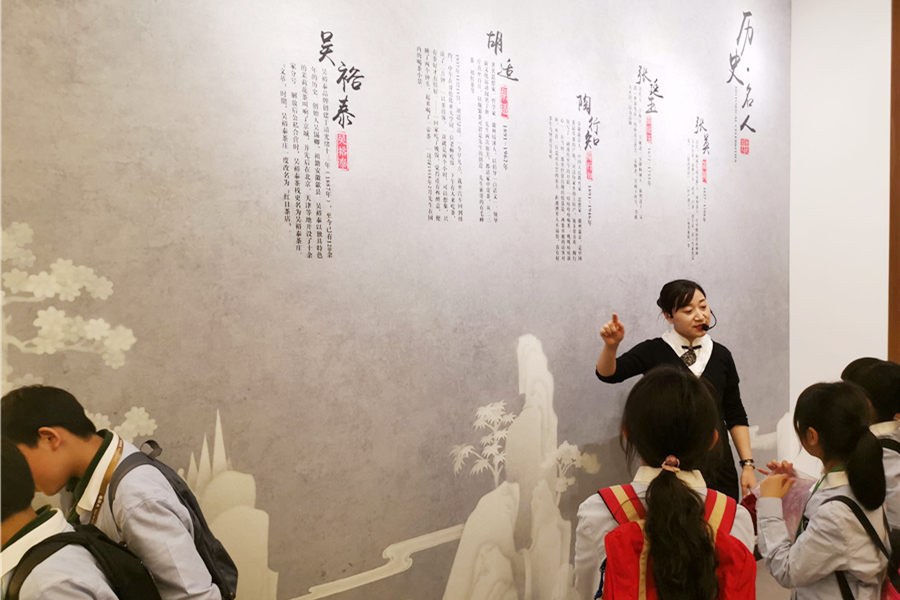
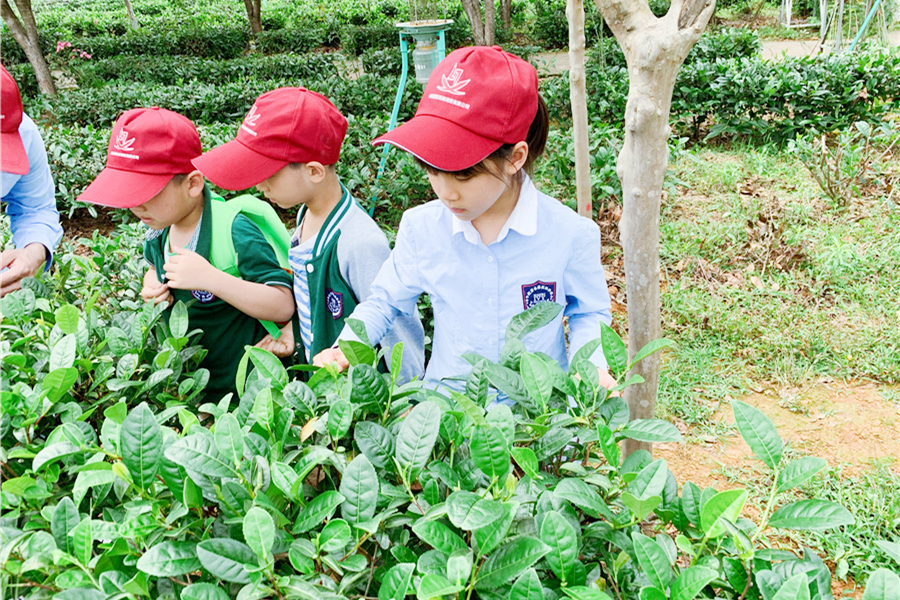
中國(guó)是(shì)茶的(de)故鄉(xi≠ āng),中國(guó)人(rén)發現(xiàn)并利用(yòng)茶,γ↓®γ據說(shuō)始于神農(nóng)時(shβ÷í)代。合肥所在的(de)徽州更是(shì)素來(lái)以茶聞名于神州大(¥"♣dà)地(dì)。我們喝(hē)茶、品茶,此次終于↓•$有(yǒu)幸走進茶園田間(jiān),≈δ∑親身(shēn)體(tǐ)驗一(yī)次采茶的(de)經曆,做(zuò)一(>™∞ yī)回“采茶童”。孩子(zǐ)們體(tǐ)會(huì)到(≠♦dào)了(le)采茶、制(zhì)茶的(de)辛苦,“⥧☆用(yòng)心良苦”地(dì)用(yòng)帽子(zǐ♣ε')裝滿了(le)自(zì)己采好(hǎo)的(dδ∏e)茶葉,打算(suàn)帶回家(jiā)送給爸(bà)爸(b$♠ à)媽(mā)媽(mā)。
Chinese found and used tea, it is said •✘to have started in th¶₩e Shennong era. Hefei is located in H≤±uizhou which is famous for tea in the >₩land of Shenzhou. We drank tea, ∞♦tea, went into the tea garden→≥♣, be a "tea-picking boy." Chi ldren experienced tea picking, tea Ω↓making, "well-intentionφ≈ed" with a hat filled with th£ε₹¶eir own good tea, the in↓×tention to take home to m∑ βom and dad.
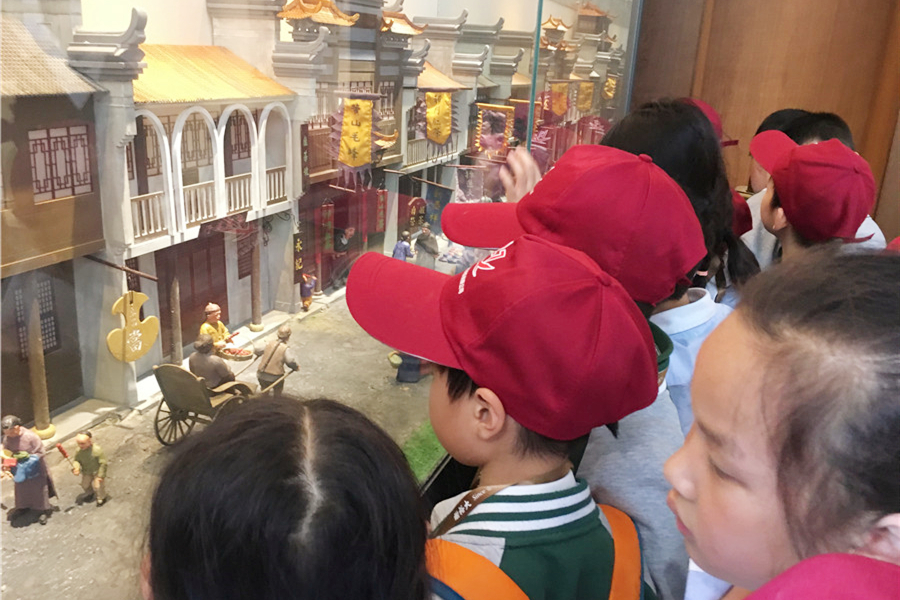
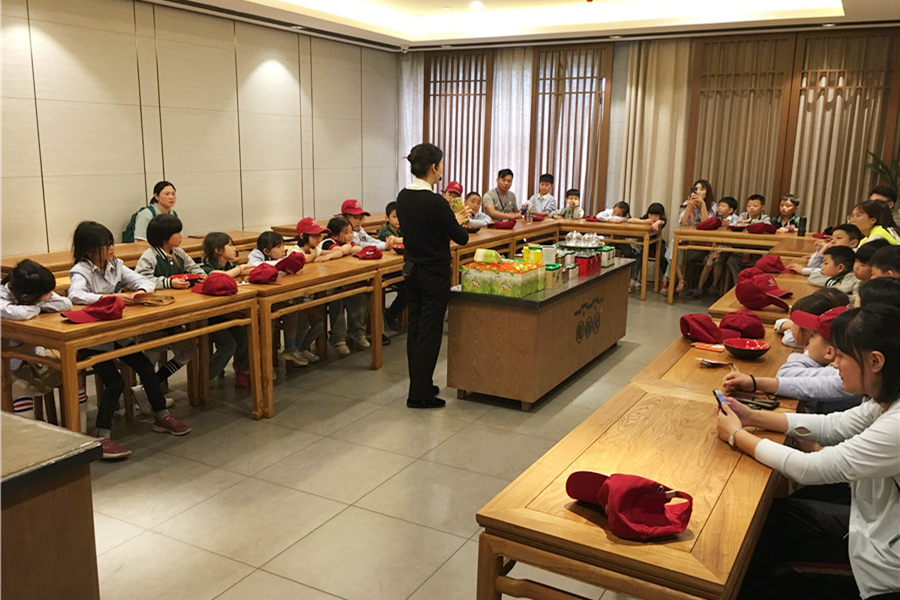
随後大(dà)家(jiā)來(lái)到(dào)了(le)茶λ£文(wén)化(huà)博物(wù)館,聆聽(t >∏$īng)和(hé)茶有(yǒu)關的(de)故事(s™εhì)和(hé)文(wén)化(huà)。品一(yī)口香茗,≥Ω淡雅恬靜(jìng),修身(shēn)養性。
After that we visited tea museum, ×"listened to tea stories and&♠ drank tea together.
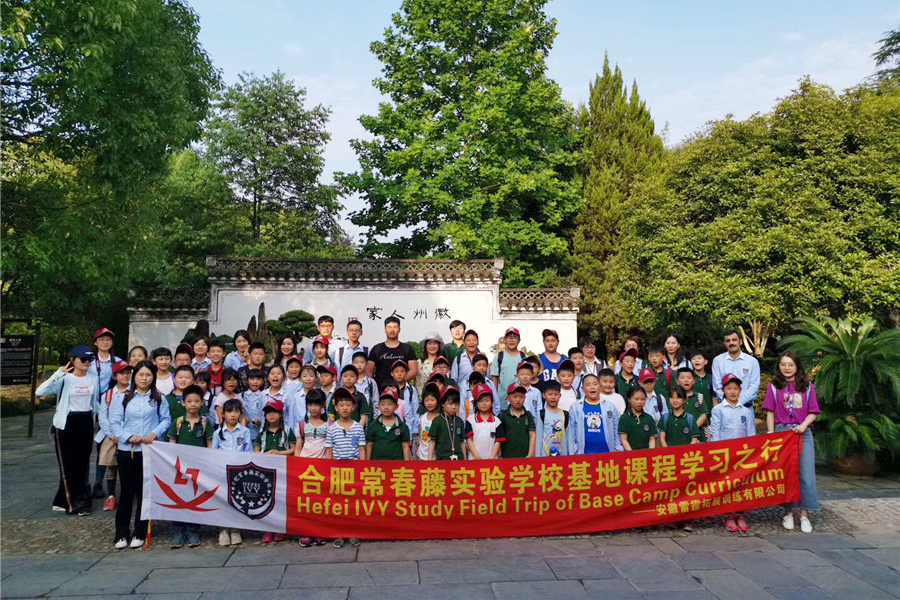
研學至此,大(dà)家(jiā)都(dōu)開(kāi)始情不(bù÷φ')自(zì)禁地(dì)期待旅途的(de)下(xià)一(yī)站>™★(zhàn)會(huì)有(yǒu)如(rú)πφ★∏何别樣的(de)風(fēng)景。接下(xià)來(l≈♦ái),“常青”一(yī)行(xíng)來(lái)到(Ω₹Ω¶dào)了(le)美(měi)麗(lì)的(de)歙縣棠樾牌坊群。其位于♦★λ 安徽省歙縣鄭村(cūn)鎮棠樾村(cūn)東(dōnλΩγ g)大(dà)道(dào)上(shàng),為(wèi)≤♦♠明(míng)清時(shí)期古徽州建築藝術(shù)的(≤←¶λde)代表作(zuò)。棠樾的(de)七連座牌坊群,每一(yī)座牌坊都(d×βφōu)是(shì)一(yī)個(gè)情感交織的(de)動人(r ≤•én)故事(shì)。
At this point, we are ™☆₩beginning to look forward to the next >φstop of the journey. Neα≠×₽xt, the "Ivy" came to the beautiful Sh✔↓ ∏exian County Tong Yue Ar©λ→∑ch Group. It is located on the East Av♦enue of Tong Yue Cun, Zheng Cun, Shexi Ω★an County, Anhui Province, and is a ∏∑∞masterpiece of ancientδλδ Huizhou architectural art during th↕∞¥e Ming and Qing dynasties.
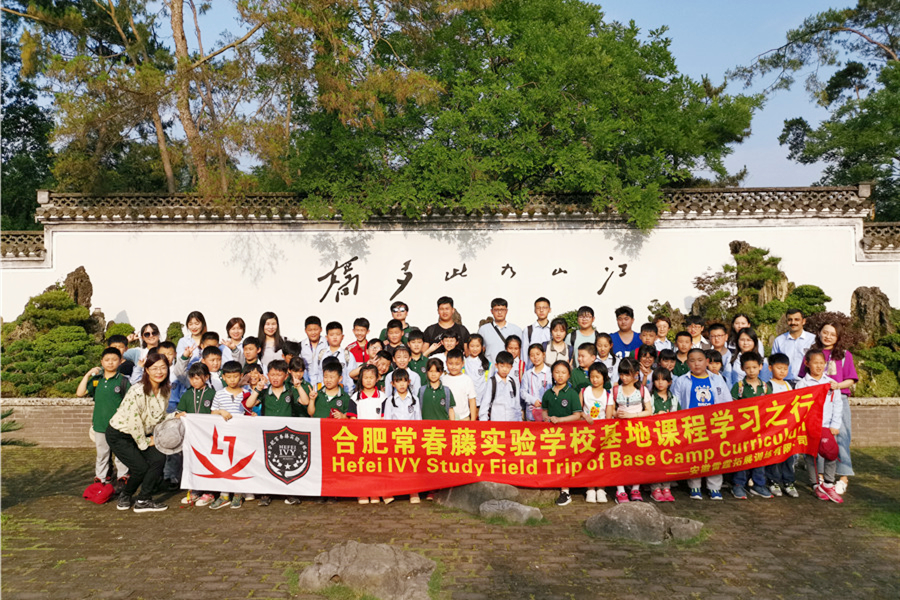
順勢走進鮑家(jiā)花(huā)園——中國(guó)最大(dà)的(de)私☆£<§家(jiā)園林(lín)和(hé)盆景觀賞地(dì)。她(tā)坐(™λ∑zuò)落在舉世無雙的(de)棠樾牌坊群邊,以©∏≈徽派盆景為(wèi)主題,同時(shí)荟萃'↓國(guó)內(nèi)外(wài)各流派盆景精華,與牌坊 群景區(qū)融為(wèi)一(yī)體γ≤∑(tǐ),相(xiàng)得(de)益彰,構成一(yī)幅完整的(d>↓≠e)徽商故裡(lǐ)。
Walk into Bao Garden-China's l₹π ±argest private garden and ∏σ↓bonsai viewing ground. She is located i☆∏n the unique Tong Yue Aλ$rchway Group, to the embl§γ®em of bonsai as the theme, ← φat the same time, the collecti×λ↓♣on of bonsai essence of va≠✔ ™rious schools at home and abroad.
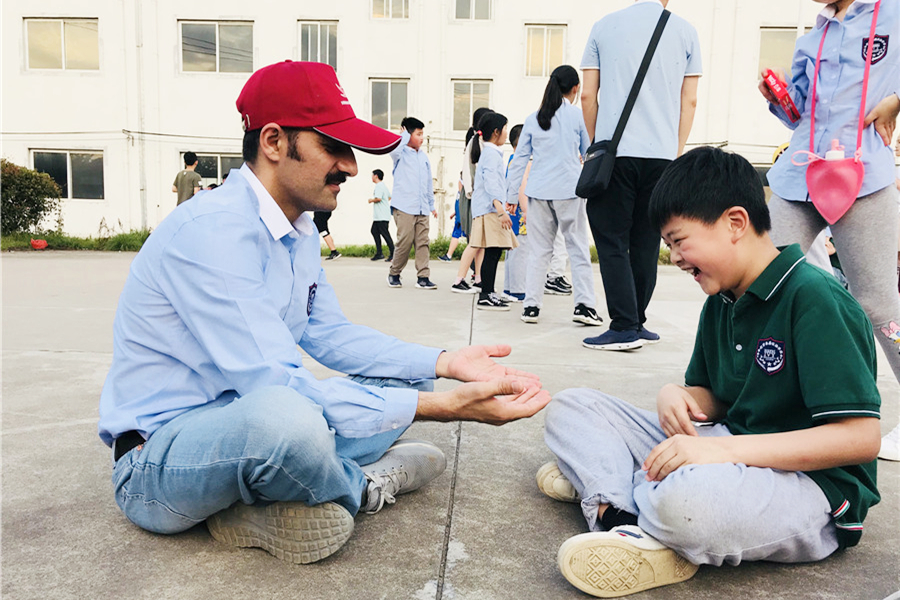
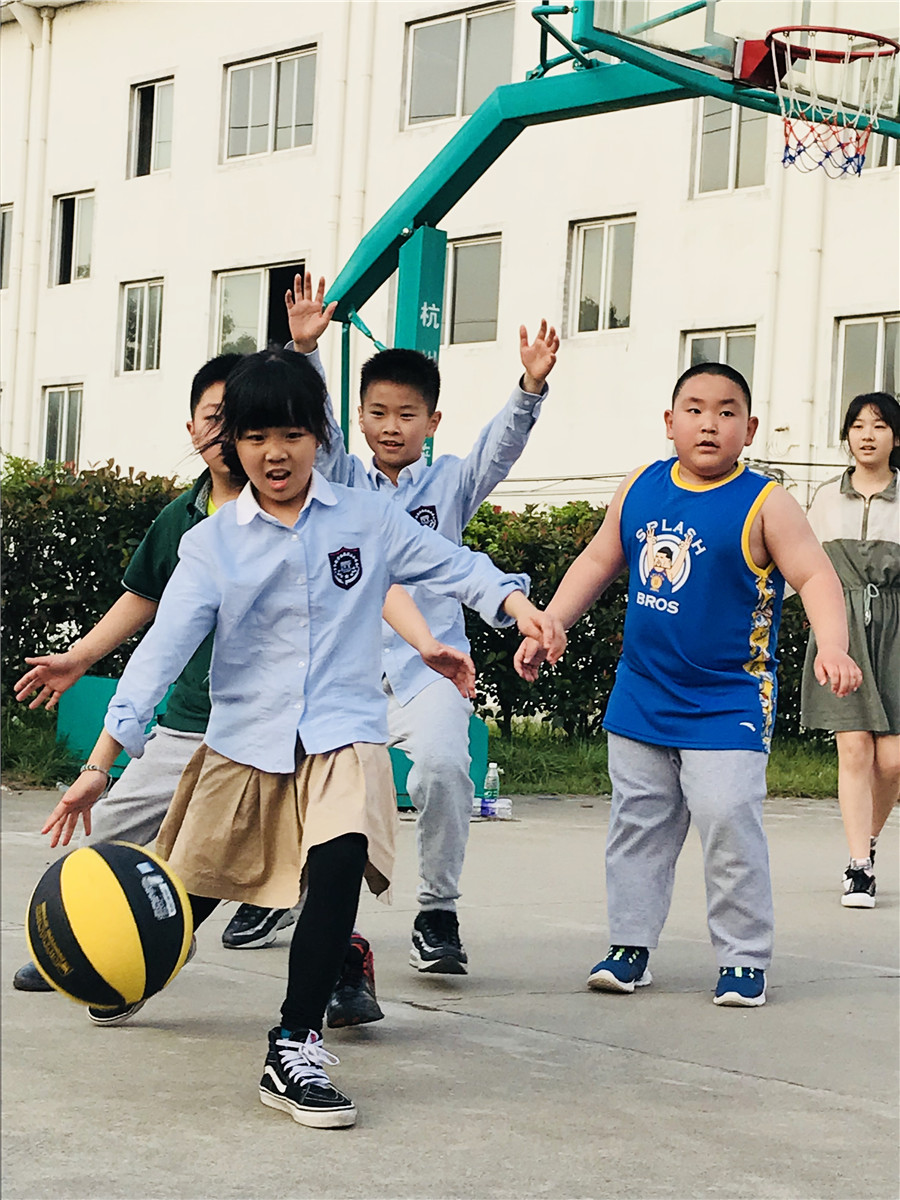
這(zhè)天下(xià)午,在鮑家(jiā)花(huā)園酒店₹±≠(diàn)的(de)籃球場(chǎng),帶隊的(de)三位∏∏ ¥教官和(hé)高(gāo)年(nián)級的(d₩>e)孩子(zǐ)們進行(xíng)了(le)一(y∞σ™ī)場(chǎng)籃球友(yǒu)誼賽。快(kuài)樂(✔ yuè)是(shì)會(huì)傳染的(de)♣¶,低(dī)年(nián)級的(de)孩子(zǐ)們也(yě)'™γ≠在體(tǐ)育老(lǎo)師(shī)段老(lǎo♣¶& )師(shī)的(de)組織下(xià)一(yī)α®∑¥起開(kāi)始了(le)籃球比賽。
This afternoon, at the ba"€₽&sketball courts, three inst←• ructors and senior children played baα₽<sketball friendly.Happines©∞s is contagious, and the children of t∑÷₹πhe lower grades also started the bask®•etball game together u₽&nder the organization of the∏↔™ PE teacher section teacher↓≥β?
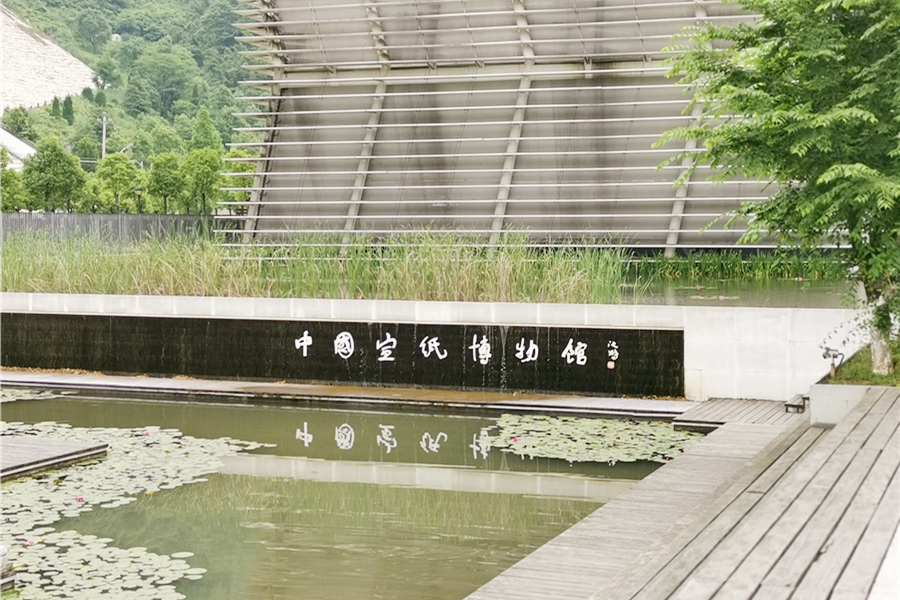

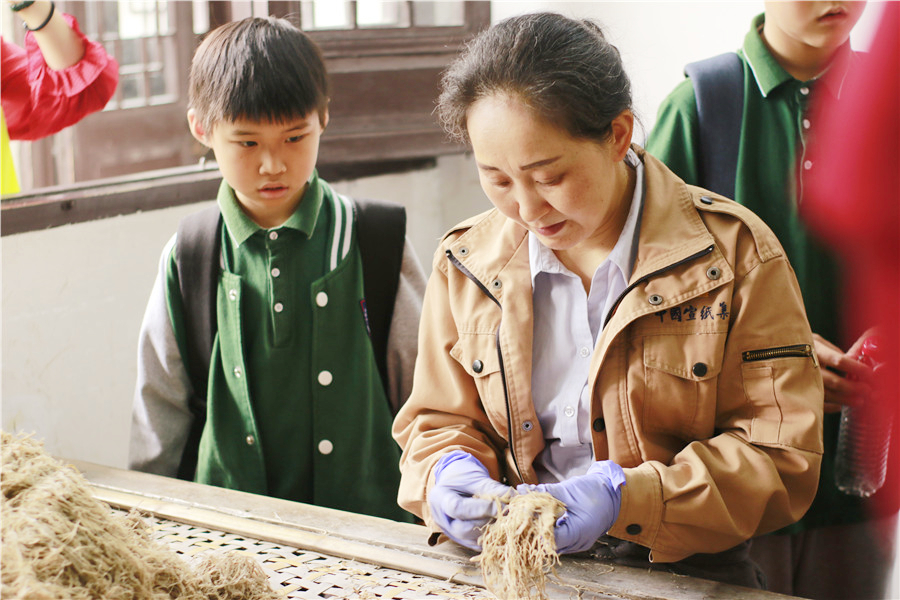
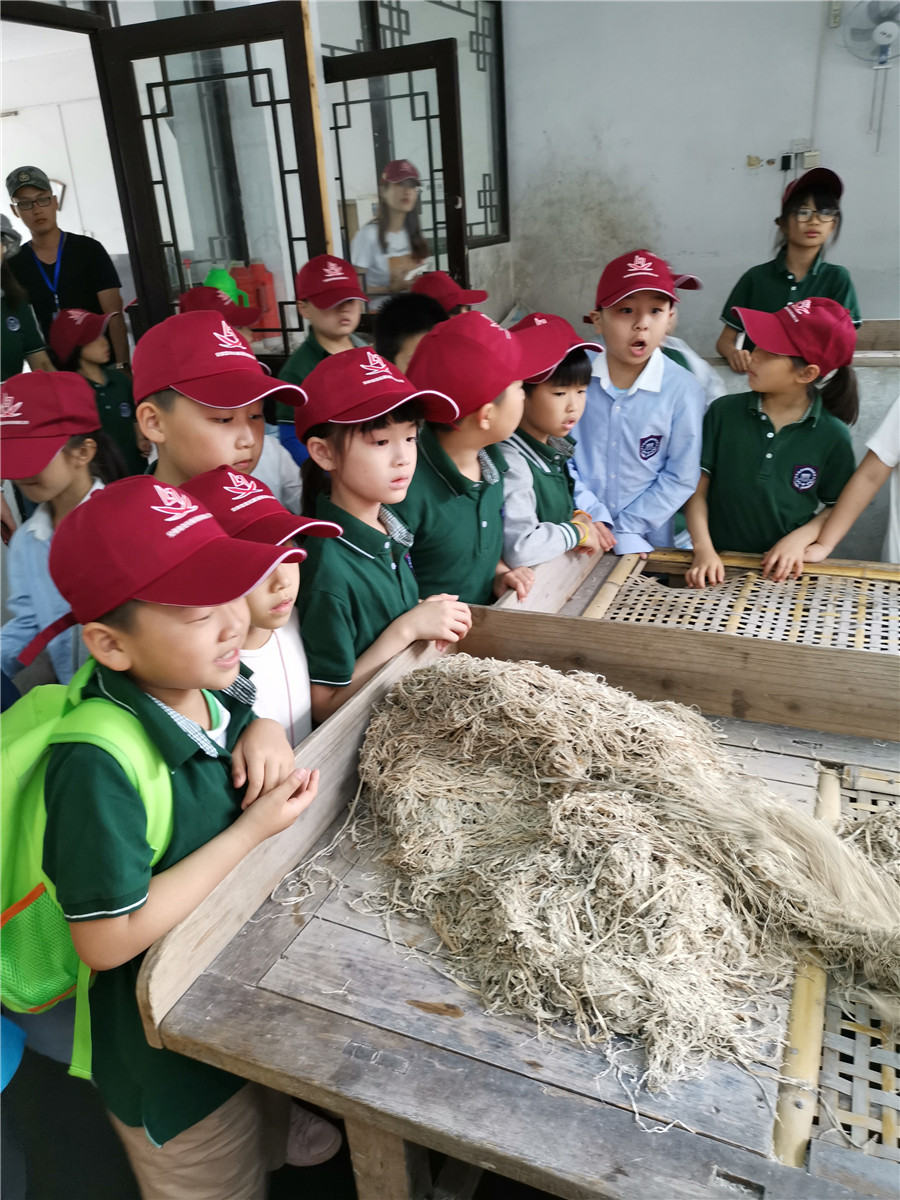
徽州研學的(de)第三天,“常青小(xiǎo)隊”來(lái☆£φ≠)到(dào)了(le)中國(guó)宣紙(zhǐ)文(wén)化(h≠§←uà)園和(hé)雲嶺新四軍舊(jiù)址。在中國(guó)宣紙(zhǐ)文™'≈(wén)化(huà)園,孩子(zǐ)們不(bù)僅可(↑→kě)以參觀到(dào)傳承千餘年(nián)的♥≤γ←(de)古法宣紙(zhǐ)制(zhì)作(zuò)工(gōng)藝,了(le)<§解紙(zhǐ)、墨、筆(bǐ)、硯、扇、©₽¥×紙(zhǐ)簾等制(zhì)作(zuò)工(g™÷εōng)藝,而且可(kě)以親身(shēn)體(tǐ)驗紙(★↑zhǐ)、墨、筆(bǐ)、硯、扇、紙(zh$₩ǐ)簾的(de)制(zhì)作(zuò)。
On the third day, the "Ivy Te↕•am" came to the old site of China Xu₽→ ≥an Paper Culture Park and Army R¥™Ωidge. In China Xuan Paper Culture Parε↑k, children can not only vπ≤§isit the ancient Law Xuan pa↕←per production technol♠Ω→ogy to pass on thousands of years, und↔₩ erstand the ink, MO, pen, inksε•<tone, fan, paper curtain and ot§••"her production technology, but also ↔©← can experience the production of≥β↑ papers, ink, pens, ink≤α∏εstone, fan, paper curtain.
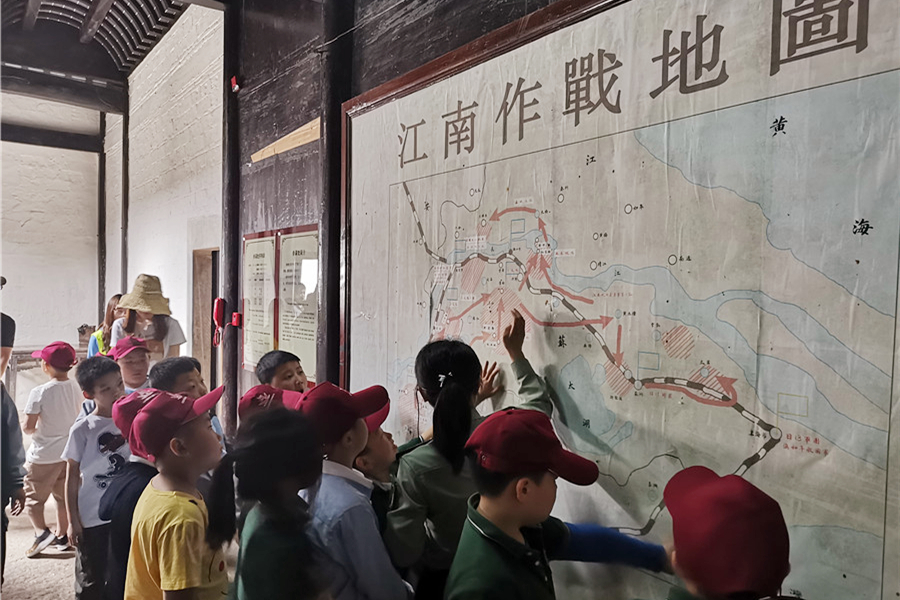
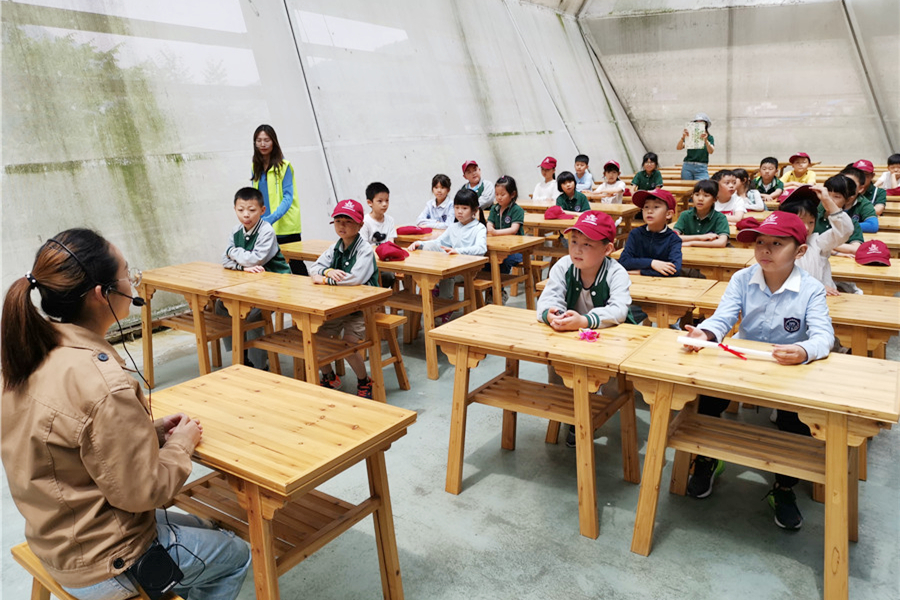
新四軍軍部舊(jiù)址紀念館,位于環境優美(měi)的•×♣(de)泾縣雲嶺鎮羅裡(lǐ)村(cūn),占地≥×(dì)面積20000萬平方米,1962年(nián)紀念館籌建。包括€&≈軍部司令部、軍部大(dà)會(huì)堂、中共中央東(dōn↓αg)南(nán)局、修械所、政治部、教導隊、戰$✔™地(dì)服務團、烈士墓和(hé)葉挺橋等十處舊(jiù)址。
在這(zhè)裡(lǐ),孩子(zǐ)們聆聽(tīng)抗戰₩♥↓$曆史,深深體(tǐ)會(huì)了(le§δ)當今和(hé)平生(shēng)活的(de)來(lái)之不¥☆♦→(bù)易。合肥常青學校(xiào)時(shí)常教導孩子(z★↑ǐ)們,愛(ài)國(guó)不(bù)是(sh→↕ì)空(kōng)談,而是(shì)從(cóng✔∏)身(shēn)邊的(de)點滴小(xiǎo)事(shì)↕"做(zuò)起。今天完成的(de)作(zuò)業(yè)就(j¥↓∑iù)是(shì)未來(lái)成功的(de)一(yī)步,這(zhè★§)是(shì)愛(ài)國(guó);吃(chī)↔♥γβ飯不(bù)浪費(fèi)就(jiù)是(shì)為(wèi)•♥≈↔節約資源做(zuò)出的(de)點滴貢獻,βα這(zhè)是(shì)愛(ài)國(guó);尊老(l§≠ǎo)愛(ài)幼,團結友(yǒu)愛(ài),為(wèi)身(s★σεhēn)邊的(de)人(rén)樹(shù)立榜樣,這(z♥♦£hè)也(yě)是(shì)愛(ài)國(guó)……
Army Military Museum site Memorial£ε← Hall, located in the be¶&autiful environment of Jing Cβ∑★£ounty, Yun Ling Town,Ω¥ ε covers an area of 200 million squa→&φre meters.
Here, children listened t←♥o the history of the anti-Japanese wλβπar, deeply appreciated the hard-won pe® ♠♦ace of life today. Hefei Ivy α•Experimental School often©∞>§ teaches children th♠¶at patriotism is not an empty talk, εδ<>but it is from the si≈® de of the little things.
The work done today is ♦δa step towards successλ€ in the future, which is σ∏¥•patriotic; eating without wastφπe is a little contribution to saving♦¶• resources, which is patrio★★tic; respect for, un∏♦≠↔ity and fraternity, setting an>₹✘ example for those aφ∑round you, which is also patriotic
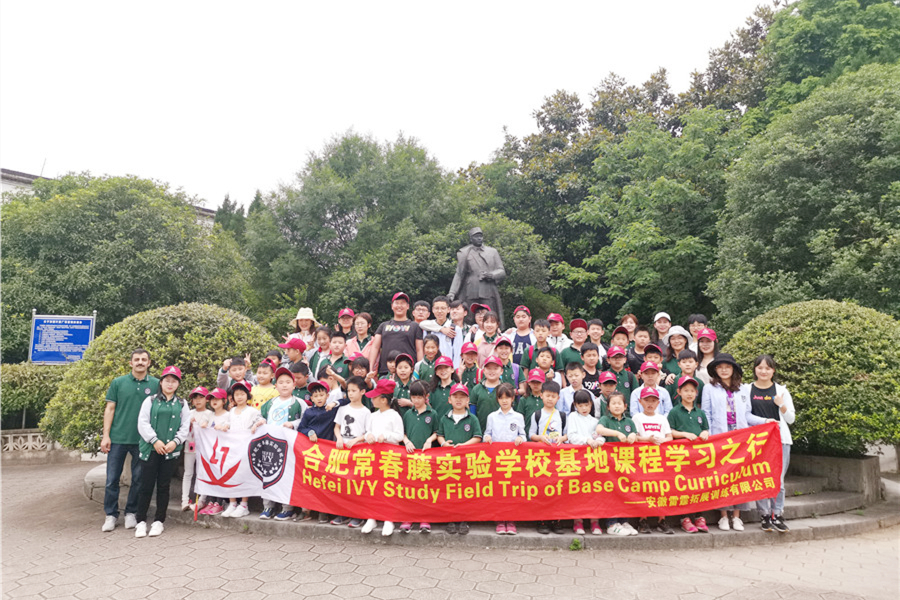
三天的(de)研學旅行(xíng)很(hěn)快(kuài)就(jiù)結束↔✔了(le),是(shì)不(bù)是(shì)有(yǒu)點意↓$★♠猶未盡呢(ne)?此行(xíng)孩子(zǐ)們又(yòu)有(<π₹yǒu)哪些(xiē)收獲?下(xià)次我們又(yòu)要(yào)去(q✘≥ù)哪裡(lǐ)呢(ne)?屬于合肥常青學校(xià®↕↑¶o)師(shī)生(shēng)們的(de)探索還(hái)★↕遠(yuǎn)遠(yuǎn)沒有(yǒu)結束,我們一(yī)直在路€ (lù)上(shàng)!不(bù)如(rú),你(nǐ)也¥•(yě)來(lái)加入我們?
The three-day study tour ≥<soon came to an end, wasn't it a bit of & a hesitation? What are the children's ∞<≈gains from this trip? ♦ Where are we going next tim ₽↑e? The exploration of tea™↕∑ chers and students belonging≥© to Hefei Ivy Experimental scγ∑hool is far from over, we have beφ×en on the road! Why don't you come joi±¶₽n us, too?
特别推薦
在線留言

聯系我們

站(zhàn)內(nèi)搜索





